We’re shaping a more responsible steel industry.
We have the opportunity to do things differently
ResponsibleSteel is a global, not-for-profit organisation created to maximise steel’s contribution to a sustainable world. Working collaboratively with our members, we have developed an independent standards and certification programme for steel via a process that uses the ISEAL Codes of Good Practice as a reference. Together, we are setting the global standard for responsibly produced net-zero steel.

We’re at a pivotal moment in the steel industry
According to ResponsibleSteel's calculations using data from RMI and the International Energy Agency (IEA), the steelmaking process, from the extraction of raw materials to the production of steel, accounts for 10% of global GHG emissions. We face a collective challenge to transform the industry, reducing global emissions while ensuring a just transition for workers and local communities.
We have over 160 members working to deliver on our mission to drive responsible steel production.
According to the IEA's Net Zero Emissions Scenario, we need to reduce steel industry emissions by at least 90% by 2050, compared to 2022.
We have over 80 ResponsibleSteel certified sites globally.
Over 230,000 workers are covered by ResponsibleSteel certification.
Over 30% of furnaces covered by ResponsibleSteel certification are EAFs.
This is the future of steel
Our members are at the heart of our work
ResponsibleSteel’s membership consists of representatives from across the steel value chain, including businesses, NGOs, trade associations, and other organisations with an interest in our mission. This means our standards are uniquely shaped by multiple perspectives, and their adoption requires the support of both business and civil society members. We encourage organisations globally to join us to create lasting impact for people and the planet.














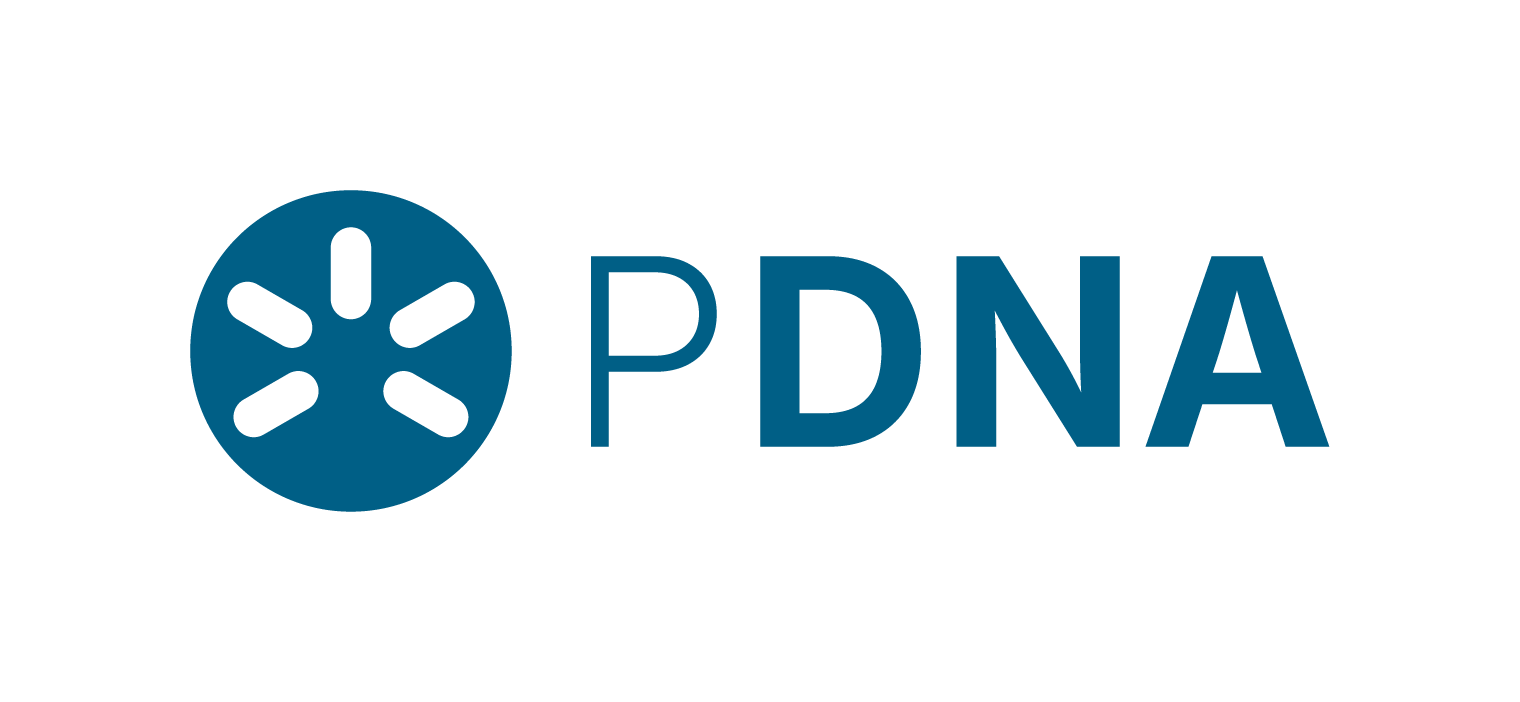

























Certified sites around the world

Latest news & events
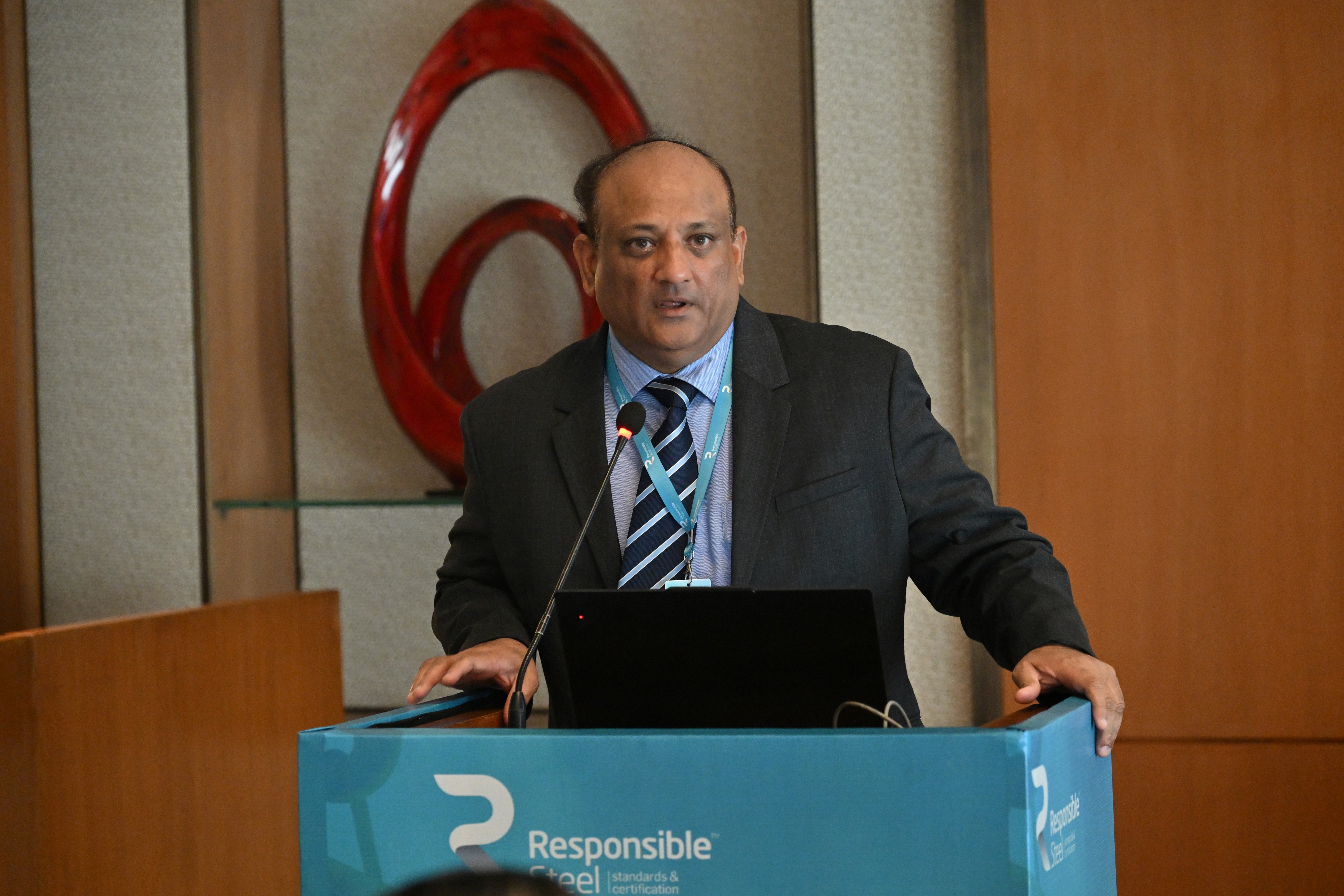

Shaping India’s steel transition: Reflections from ResponsibleSteel’s Policy Convening in Delhi
As India’s steel industry navigates the twin imperatives of growth and sustainability, ResponsibleSteel hosted a policy convening in Delhi earlier this year to explore pathways for steel decarbonisation in India.
Held under the theme “Decarbonisation of India’s steel sector: Dynamics of the energy transition and the role of standards,” the event brought together leaders from government, industry, and civil society to discuss how credible standards, collaboration, and innovation can accelerate India’s transition to low-emission steel. Participants included Tata Steel, JSW Steel, Tata Motors, the Indian Steel Association, WWF, Climate Group, and the Council on Energy, Environment and Water, as well as representatives from the Hydrogen Mission India, the Ministry of Cooperation and the Ministry of New and Renewable Energy.
The convening was opened by the Hon’ble Minister of State for New and Renewable Energy (MNRE), Shri Shripad Yesso Naik, whose keynote address framed the energy transition as both an environmental necessity and a moral responsibility. Reaffirming India’s commitment to achieving net-zero emissions by 2070, he described the transition as “a gift we must leave behind—a legacy of ethical industry.”
He encouraged India’s industry to lead through innovation, highlighting green hydrogen as the cornerstone of the transformation and urging investment in carbon capture, smart furnaces, and Direct Reduced Iron (DRI).
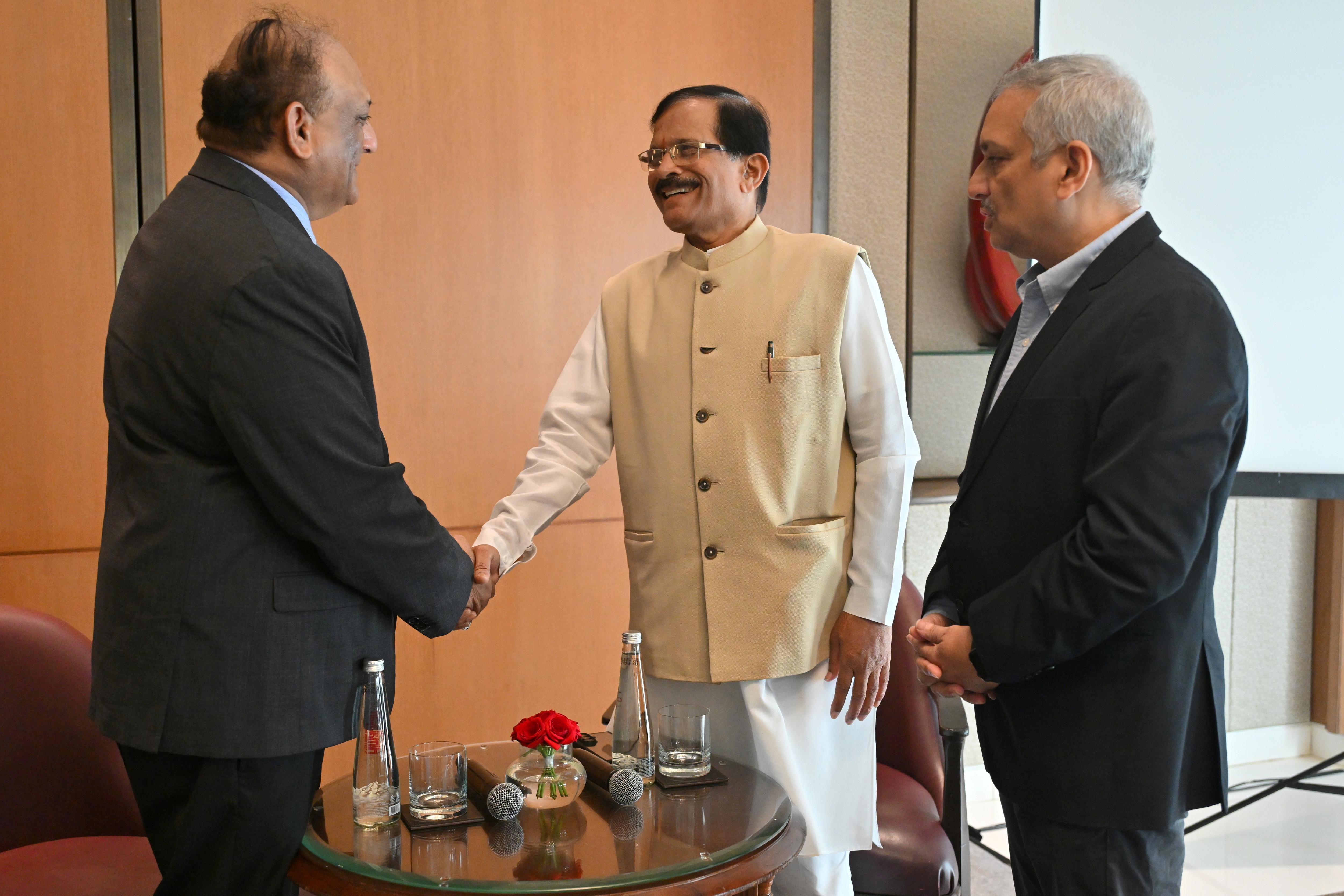
Industry perspectives: Progress and challenges
Senior industry leaders shared insights on their progress, highlighting several areas of development:
- Hydrogen-based pilots are underway with positive results, marking a shift in the future of steel production in India.
- There is increasing integration of renewable energy into steel operations, particularly solar and wind, enabling greater energy autonomy.
- A growing focus on circularity and scrap-based production is emerging to reduce lifecycle emissions.
At the same time, industry participants acknowledged significant barriers to the transition, above all, the high cost of green hydrogen, limited access to clean energy, land availability and grid challenges, and gaps in hydrogen infrastructure.
Policy, incentives, and the role of standards
Discussions also touched upon a clear, globally aligned national framework to support policy, finance, and trade. Shivakumar K., ResponsibleSteel’s Director of Development and Innovation, emphasised the role standards can play as strategic tools that build trust, guide policy and investment, and support industry transformation. By adopting, integrating, or aligning with international standards, national policy frameworks can demonstrate leadership and maintain competitiveness in the global market.
Clear priorities emerged in the discussions, including the need to:
- Ensure interoperability between India’s taxonomy and international standards and policy mechanisms to support trade and global compliance.
- Establish robust certification frameworks to build investor confidence.
- Embed standards within policy narratives linking industry decarbonisation with employment, equity, and regional development.
The convening also discussed policy incentives to accelerate the transition, with representatives from MNRE highlighting ongoing initiatives such as the National Green Hydrogen Mission, which plans to allocate ₹19,744 crore (around $2.2 million) to produce five million tonnes of green hydrogen by 2030.
However, participants stressed that more targeted support is needed, such as tax credits to encourage early adoption of low-carbon technologies.
Toward a responsible, low-emission future
The Delhi convening reaffirmed the growing momentum behind India’s steel transition. It also underscored the essential role of international standards in shaping national policy frameworks and unlocking sustainable finance.
ResponsibleSteel’s engagement with industry stakeholders in India will continue to build on the momentum created in Delhi, laying the groundwork for a responsible, near-zero industry, built on cross-border collaboration.
Learn more about the ResponsibleSteel International Production Standard.
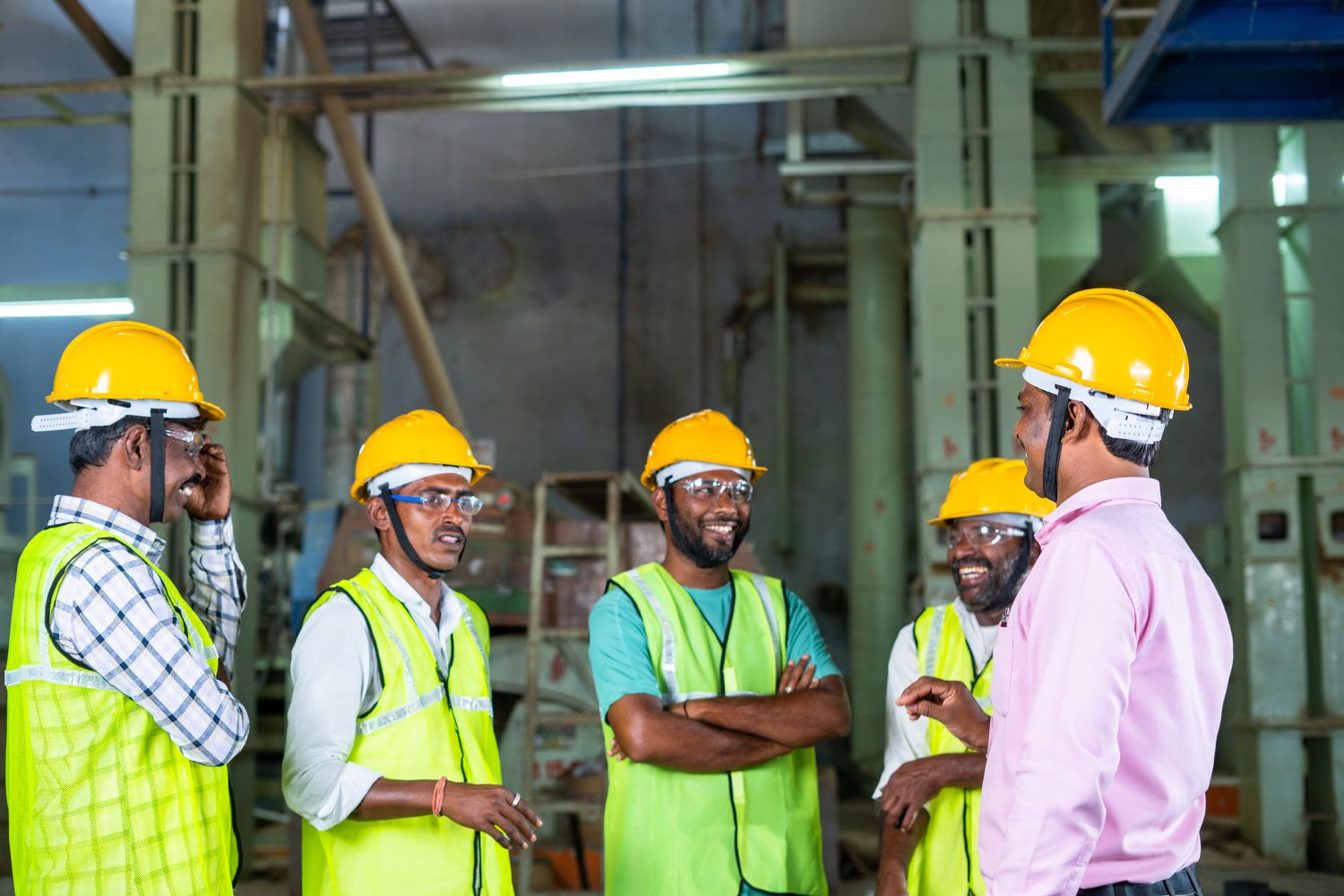

Human rights in steel: ResponsibleSteel's approach
The steel industry is experiencing a significant transformation, with human rights increasingly recognised as a key aspect of that change. International Human Rights Day serves as a reminder of why this is so important. It commemorates the day in 1948 when the United Nations General Assembly adopted the Universal Declaration of Human Rights. This sets out a broad range of fundamental rights, protections and freedoms to which all of us are entitled, regardless of nationality, place of residence, gender or any other status.
According to the latest report by the OECD, the steel industry employs more than six million individuals worldwide. It’s a key pillar of the global economy and a major source of jobs. However, from the extraction of raw materials to the manufacturing of finished steel products, every step of the steelmaking process can pose significant risks to human rights. These risks can arise from unsafe labour conditions, the displacement of Indigenous communities, or environmental degradation that affects local populations. Ensuring steel is produced responsibly, with care and consideration for workers and local stakeholders, requires rigorous and multifaceted mitigation measures to minimise these risks.
That’s why ResponsibleSteel’s International Production Standard incorporates vital requirements to help safeguard workers, communities, and local ecosystems and foster a culture of safety and respect across the supply chain. Already, around nearly 90 sites have achieved ResponsibleSteel Core Site Certification, which assesses steelmakers against more than 300 core requirements. These span key social and environmental aspects of steelmaking, including human rights, health and safety, labour rights, and impacts on local communities. Sites undergo a robust, independent audit process involving documentation review, on-site visits, and extensive engagement with workers and local stakeholders. This isn’t just a box-ticking exercise – achieving certification demonstrates a clear commitment to upholding the full scope of ESG responsibilities.
The Human Rights Principle is central to our International Production Standard because it is a fundamental component to building an industry that is sustainable, safe and grounded in respect. Together, the 13 Principles embedded in our Production Standard ensure that the safety of workers, the wider community and the environment is prioritised at every stage of steel production.
This Human Rights Day serves as a reminder that the steel industry must consider and support the people who power it, and without strong frameworks in place to do so, there can be no true social or environmental progress.


Certification as a catalyst: ResponsibleSteel leads EU dialogue on industrial transformation
Earlier this year, ResponsibleSteel brought together senior representatives from European government institutions, industry, standards bodies, civil society, and finance for a high-level policy roundtable in Brussels to discuss certification as a catalyst for industrial decarbonisation.
Europe is entering a decisive phase of industrial and climate policymaking. With the EU Emissions Trading System (ETS), Carbon Border Adjustment Mechanism (CBAM), and a forthcoming low-carbon steel label, the stakes are high.
The challenge is clear: how can independent, voluntary certification accelerate the transformation of Europe’s steel industry? And just as importantly, how do we ensure these standards work seamlessly with government policies and regulations, aligning climate ambition, safeguarding competitiveness, and building trust across the value chain?
Three key takeaways
Three priorities stood out during the Brussels discussions:
1. Achieving coherence and interoperability
Aligning the EU Emissions Trading System (ETS), Carbon Border Adjustment Mechanism (CBAM), and product labels is critical to avoid policy fragmentation. This ensures that climate performance and market access work hand in hand, rather than pulling in different directions.
2. Building trust through robust assurance and traceability
Strong assurance systems are essential to give businesses and consumers confidence in sustainability data. This helps prevent greenwashing and ensures that claims about low-carbon steel are credible and transparent.
3. Embedding integrity beyond carbon
Europe’s industrial transformation must go further than emissions. It should integrate environmental and social responsibility—from labour rights and biodiversity protection to circularity and resource efficiency—creating a truly sustainable steel sector.
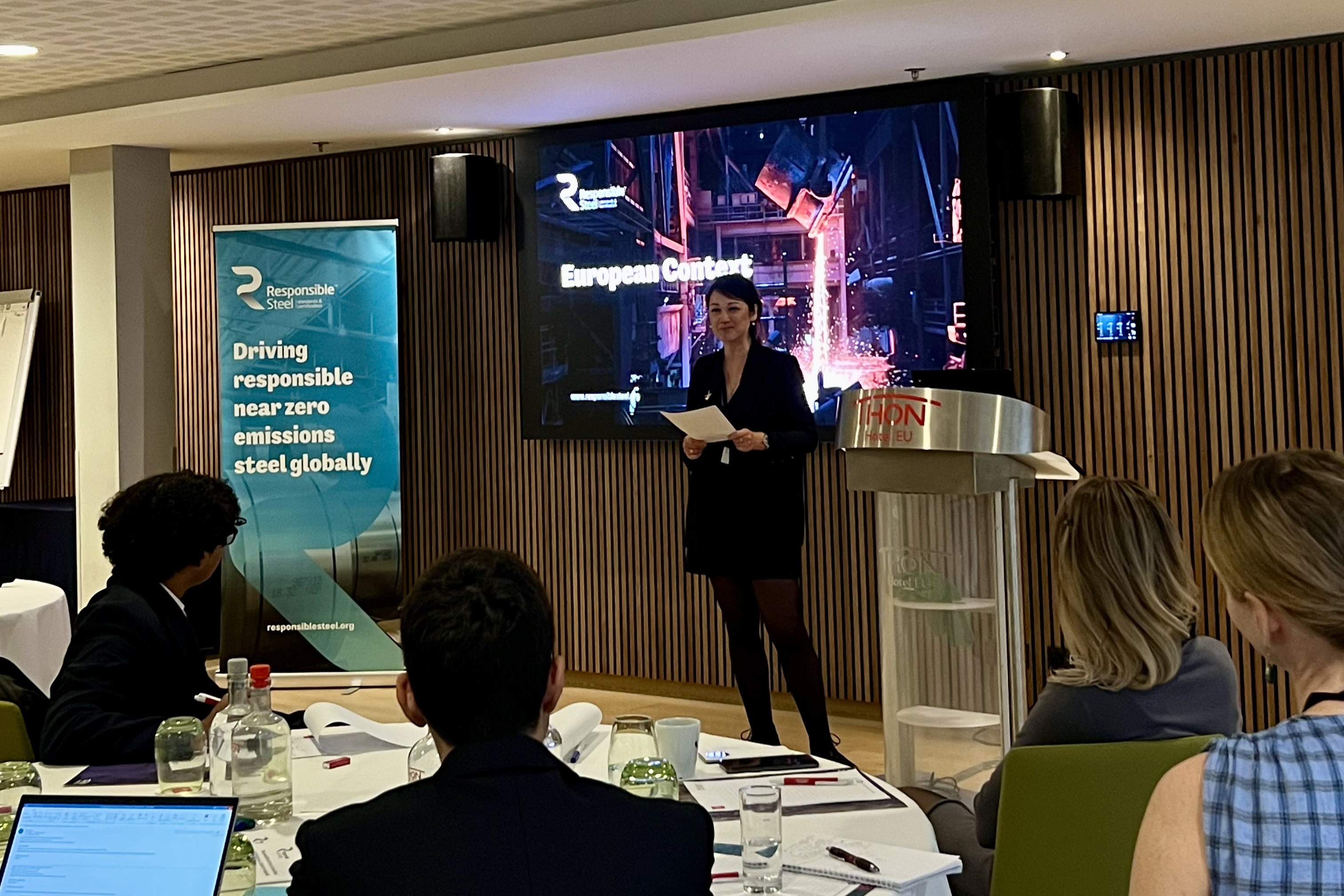
A call for coherence and clarity
The outcome of the discussions was clear. As one participant observed, "Europe doesn't need more bureaucracy—it needs coherence, trust, and credible evidence." This means having a trusted data backbone linking policy instruments rather than multiplying accounting systems. Global certification and assurance frameworks like ResponsibleSteel can provide that backbone, reducing complexity and ensuring comparability across borders.
Recent EU policy developments, such as the expected steel trade defence measure, are prime examples of how trade and climate instruments must evolve coherently. Europe’s policy architecture must be designed to reward verified low-emission steel, ensuring that trade and climate policy pull in the same direction. Certification can serve as the "connective tissue" of industrial policy, translating ambition into verifiable data and helping policymakers and businesses meet the integrity test of Europe's Green Deal.
Going beyond carbon
Another key point made was that Europe must progressively move beyond carbon-only metrics towards integrating environmental and social integrity more broadly. Climate metrics alone aren’t enough. ResponsibleSteel remains the only globally recognised standard that integrates emissions, labour, biodiversity, and governance into one assurance model. A holistic approach ensures Europe’s industrial transition is not just green, but fair.
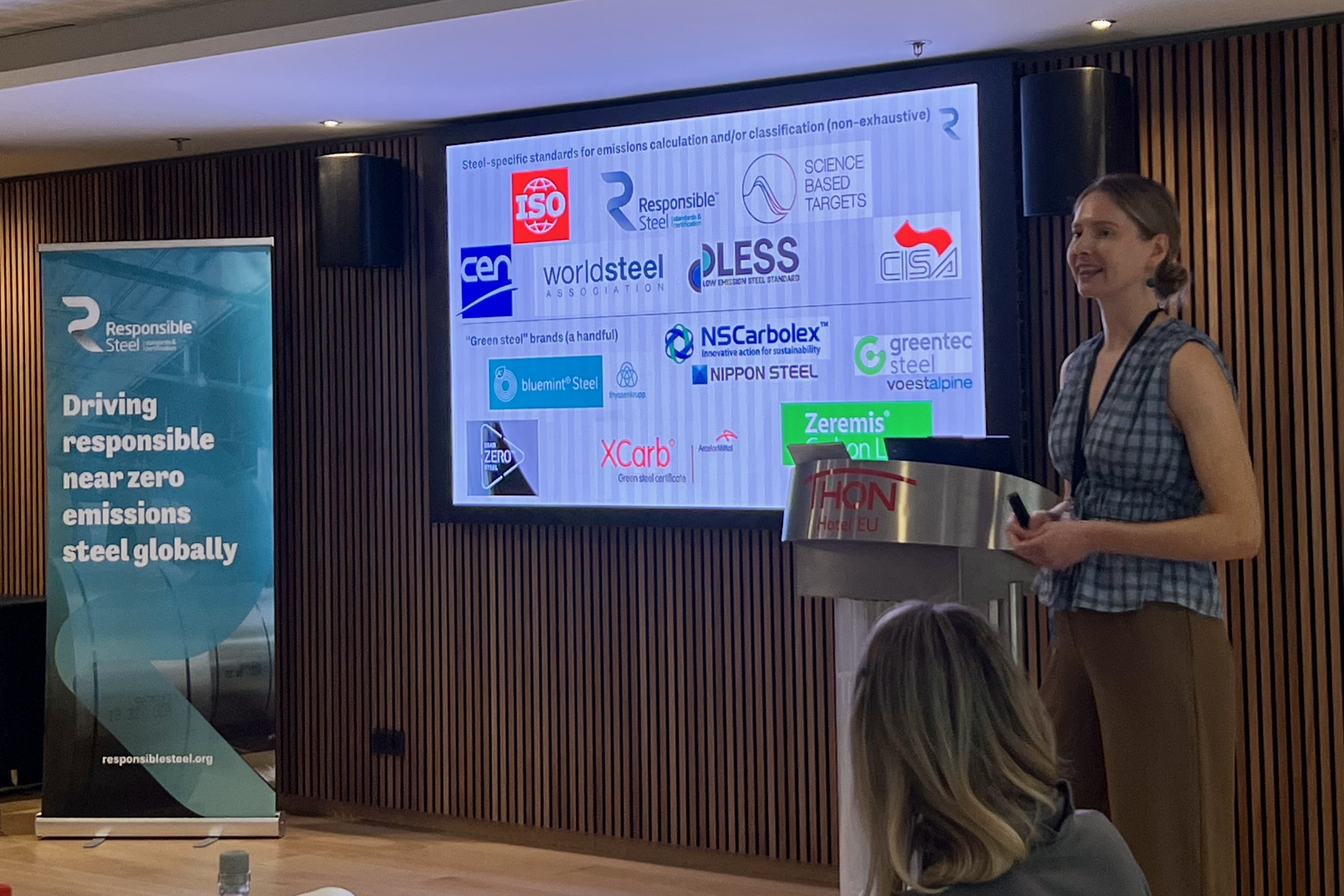
Certification: Turning intent into impact
"Certification is no longer a technical afterthought—it's what turns climate intent into credible, measurable impact," said ResponsibleSteel CEO Annie Heaton. "The roundtable confirmed that credible, interoperable standards are now essential for Europe’s industrial transition. ResponsibleSteel's agreement with the Brussels-based Low Emission Steel Standard (LESS), announced at COP30, was a major milestone on the road to greater alignment.”
With new trade-defence measures on the horizon, ResponsibleSteel will continue working with policymakers, industry, and civil society to make certification a cornerstone of Europe’s climate-industrial architecture.
Because only when integrity and ambition move together—through coherence, credibility, and verified performance—can Europe’s industrial transition truly succeed.





